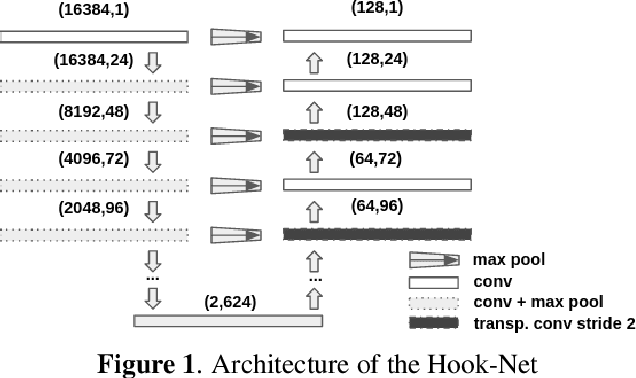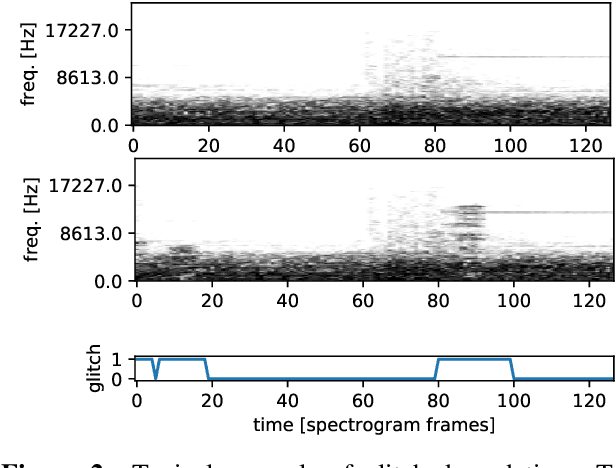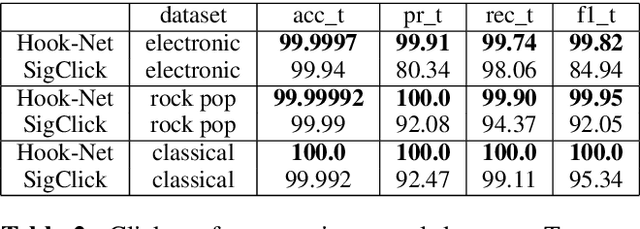Audio Defect Detection in Music with Deep Networks
Paper and Code
Feb 11, 2022



With increasing amounts of music being digitally transferred from production to distribution, automatic means of determining media quality are needed. Protection mechanisms in digital audio processing tools have not eliminated the need of production entities located downstream the distribution chain to assess audio quality and detect defects inserted further upstream. Such analysis often relies on the received audio and scarce meta-data alone. Deliberate use of artefacts such as clicks in popular music as well as more recent defects stemming from corruption in modern audio encodings call for data-centric and context sensitive solutions for detection. We present a convolutional network architecture following end-to-end encoder decoder configuration to develop detectors for two exemplary audio defects. A click detector is trained and compared to a traditional signal processing method, with a discussion on context sensitivity. Additional post-processing is used for data augmentation and workflow simulation. The ability of our models to capture variance is explored in a detector for artefacts from decompression of corrupted MP3 compressed audio. For both tasks we describe the synthetic generation of artefacts for controlled detector training and evaluation. We evaluate our detectors on the large open-source Free Music Archive (FMA) and genre-specific datasets.
 Add to Chrome
Add to Chrome Add to Firefox
Add to Firefox Add to Edge
Add to Edge